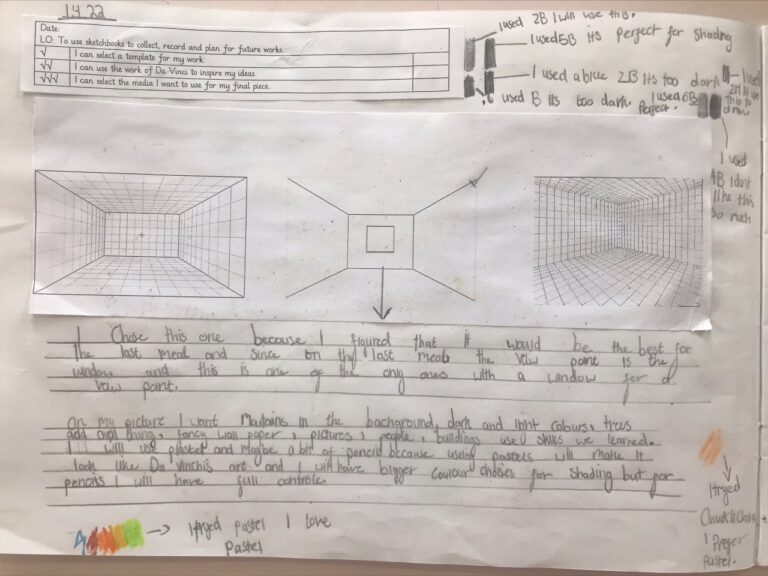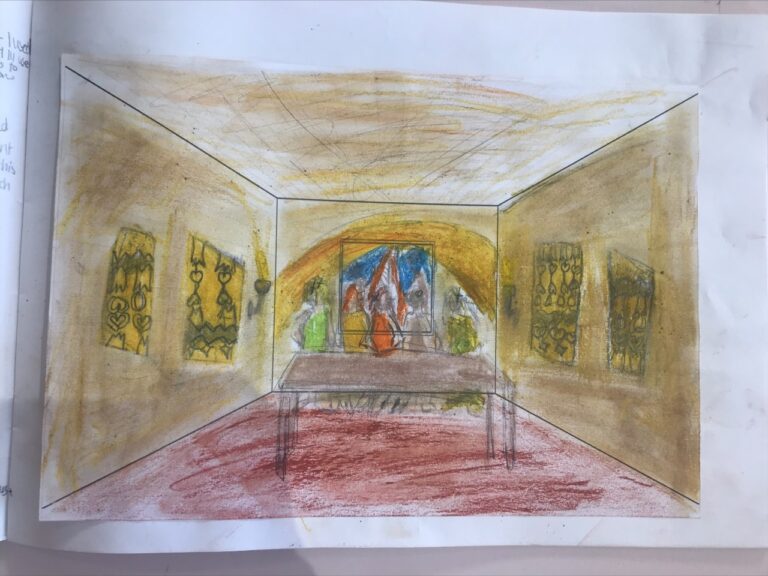Art
"He who works with his hands and his head is a craftsman.
He who works with his hands and his head and his heart is an artist."
Saint Francis of Assisi
Through a high-quality Art and Design education, pupils will be engaged, inspired and challenged; equipping them with the knowledge and skills to experiment, invent and create their own works of art, craft and design.
We endeavour for pupils to be keen to learn new skills and work hard to perfect those shown to them. Learning will often be cross-curricular; helping to express feelings and emotions through art. Through creative learning experiences, pupils will develop resilience and ambition to do well and inspire others.
Our school has created a Long Term Progression Plan to ensure that the broad attainment areas set out in our curriculum are taught effectively and relates progression to the UK National Curriculum.
Through the Long Term Progression plan, clear progression strands are highlighted to ensure that progression outcomes are outlined throughout school.
In addition, key vocabulary has been identified throughout our Long Term Planning to ensure vocabulary is progressive throughout each year group.
Our Art curriculum is taught on a 2 Year rolling cycle, enabling each year group in school to focus on the same strand to ensure clear progression throughout each Key Stage.
Long Term Plan
Key Vocabulary Progression
Example Progression Strand
Implementation - How Will We Deliver the Curriculum?
Underpinning our Long Term Planning we have the seven substantive concepts; Line, Shape, Colour, Form, Value, Texture and Space. When related to the seven substantive concept areas, progression might be knowledge of a new artist that pupils have learned, it might be ideas recorded in their sketchbook or a new skill they have learned. It could equally be a discussion they have taken part in about their or other’s work. In short, progression is everything the pupils learn in an art lesson. For this reason, our teachers ensure that the learning is sequenced properly and designed according to the needs and age of the children. As children progress through school, they study a broad range of artists, exploring different styles and techniques.
Impact - How Do We Know Our Art Curriculum is Effective?
We use Fischer Family Trust (FFT) assessment trackers to track pupils progress across KS1, LKS2, and UKS2 to judge if children are working at the expected level and are making progress. The FFT assessment trackers have been created using our Long-Term Progression plans to include our curriculum progression statements. These statements cover: study of artists, Drawing techniques, Drawing skills, 3D skills, printing, painting skills and textiles.
Pupil Voice
Pupil voice is used to not only assess how well they have retained the knowledge they have been taught, but also to elicit pupils individual thoughts and feelings towards their and other’s artwork.
Display
Art is created to be enjoyed. In addition to Art display, showcasing the progression of Art throughout school, the majority of the displays in school are either centrally themed around or accentuated by pupils artwork.
Sketchbooks
Sketchbooks are used to explore ideas, practice techniques, and for pupils to record their individual responses. As sketchbooks are passed on from year to year, they provide a tangible measure of progress. Even within a unit of work, progress is clearly visible, but over an age phase, a sketchbook acts as a visual journal showing clear skill and knowledge development. Below, are examples of how we use sketchbooks at Athersley North Primary School.
Knowledge Organisers
Knowledge Organisers are introduced at the start of a new theme/unit of work. This tool is used to help pupils gain, retain and build the knowledge and skills set out in long and medium term plans.
Below are some examples of Knowledge Organisers.




